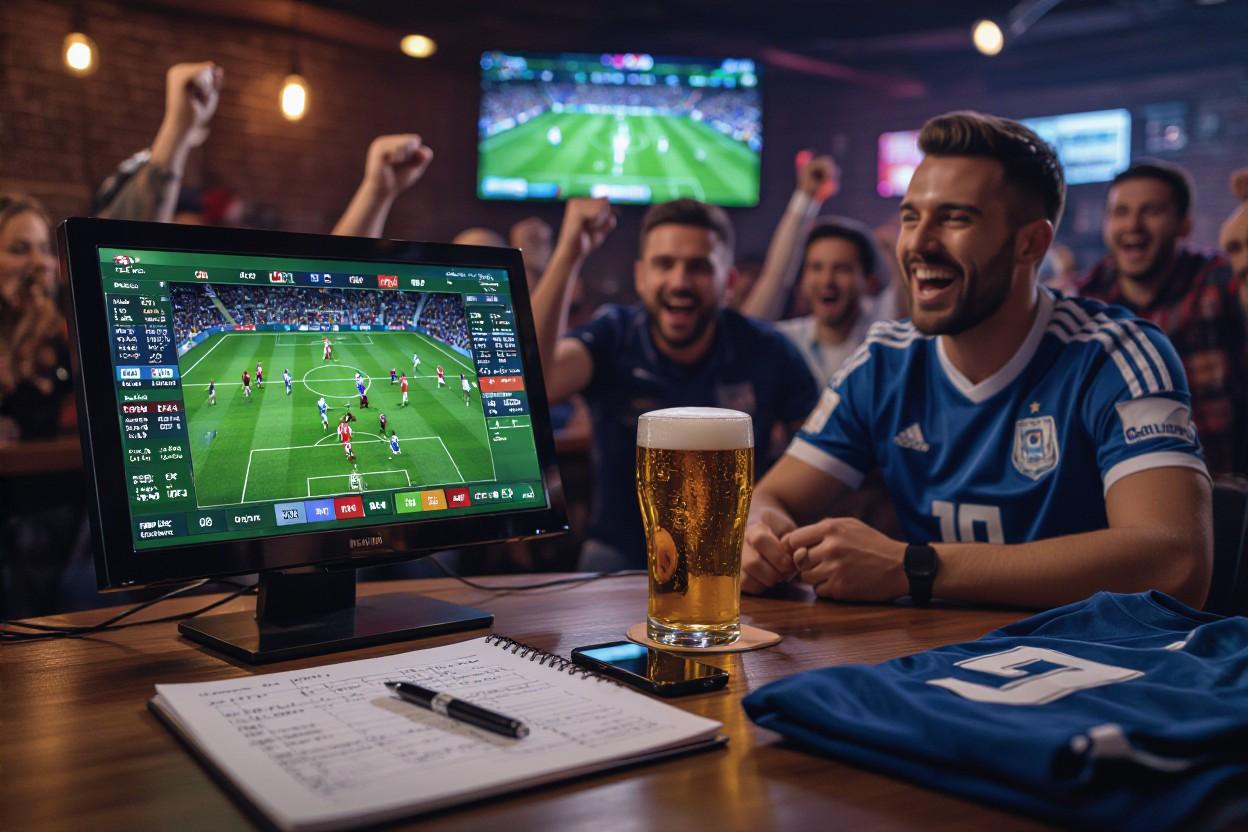Over the course of a soccer match, live odds fluctuate rapidly based on team performance and various in-game events. Mastering how to read these odds can enhance your betting strategy, allowing you to capitalize on favorable situations. This guide will provide you with vital tips on interpreting live odds efficiently, bolstering your ability to make informed decisions in real time and potentially increasing your profitability in soccer betting. Understanding these dynamics will arm you against the risks of betting while enabling you to seize valuable opportunities.
Understanding Live Odds
Live odds represent the constantly updated betting lines during a soccer match, reflecting real-time developments. These odds fluctuate based on in-game events such as goals, cards, injuries, and momentum shifts. They allow bettors to place wagers while the match is ongoing, often offering better returns if placed at the right moment.
The Importance of Live Odds in Soccer Betting
Live odds provide bettors with a dynamic tool to capitalize on current match conditions. They reflect the shifting probabilities of outcomes, enabling informed decisions as the action unfolds. By keenly observing these changes, bettors can exploit inefficiencies in the market, often finding value outside of pre-match odds.
Bettors can benefit significantly from live odds by analyzing game flow and adjusting strategies accordingly. For instance, if a team just scored, their odds might shorten, suggesting higher confidence in their victory. Conversely, should a key player get injured, odds may lengthen for the opposing team, representing an opportunity for savvy investors. Utilizing live odds effectively requires not just a grasp of statistics but also an understanding of the game’s nuances, making quick, informed decisions imperative in maximizing profitability.
How to Read Live Odds
Reading live odds effectively requires familiarity with various components that dictate fluctuations in betting lines. This involves understanding the types of bets available, such as moneylines, point spreads, and totals, each of which reflects different aspects of the game as it unfolds. Monitoring these odds alongside match events like goals, injuries, and red cards allows bettors to make informed decisions based on real-time data.
Basic Terminology
Familiarity with basic terminology enhances comprehension of live odds. Terms like American odds, denoting positive or negative values that indicate potential profit against a $100 stake, and decimal odds, which represent the total payout including the stake, are foundational. Understanding vig or juice, the bookmaker’s margin, also plays a role in evaluating potential returns.
Interpreting Odds Movements
Odds movements signal important insights into market sentiment and game dynamics. A shift in odds towards a specific outcome often indicates increased betting action or a change in perceived team performance. For example, if a team priced at +200 suddenly moves to +150 after scoring, the market views them as more likely to win. Conversely, a drift from -150 to -200 may suggest fallout from an injury, altering the expected probability of that team’s victory.
Monitoring these shifts in real time can provide valuable insights. For instance, if a normally strong favorite sees their odds lengthen after conceding a goal, it might present a lucrative opportunity for a live bet on that team to win, especially if historical data shows they frequently recover from such setbacks. Additionally, understanding that sudden odds changes might reflect sharp money from professional bettors can also influence your strategy, as their insights often carry weight in the betting market.
Factors Influencing Live Odds
Several elements shape live odds during a soccer match, providing bettors with critical insights. Key factors include:
- Game dynamics
- Team performance
- Injuries
- Weather conditions
- Crowd influence
After considering these factors, bettors can make informed decisions to improve their chances of success.
Game Dynamics
Game dynamics, such as momentum shifts and scoring opportunities, directly impact live odds. For instance, if a team has a series of shots on target but fails to score, the odds may change in favor of the opposing team, reflecting a potential for a counterattack or defensive lapse.
Team Performance and Injuries
Recent team performance and key injuries play significant roles in live odds adjustments. A standout player’s injury can dramatically influence betting lines as it affects a team’s overall strength and strategy. Historical data indicates that when a leading scorer is sidelined, the team’s win probability drops by about 25%, leading to dramatic shifts in odds.
In-depth analysis of injuries looks at not only the player missing but their position and role in the team’s tactical setup. For example, losing a central defender may lead to a more porous defense, prompting bookmakers to adjust live odds in favor of a stronger attacking team. Bettors who monitor injury reports closely often find advantageous betting opportunities, especially in tight contests where every player’s contribution can be pivotal.
Tips for Reacting to Live Odds
Reacting effectively to live odds requires quick thinking and a strategic mindset. Key strategies include:
- Stay updated on team performance and changes
- Monitor player injuries or substitutions
- Observe game momentum shifts
- Utilize statistics for betting trends
- Be ready to capitalize on favorable line changes
Perceiving these elements can enhance your betting acumen.
Analyzing Real-Time Information
Effective analysis of real-time information is pivotal in live betting. Track various factors such as the scoreline, possession stats, and key player actions. Live analytics platforms can provide insights like expected goals (xG), allowing bettors to gauge whether a score represents true performance. Such diligence can inform whether to bet on current odds or wait for potentially better opportunities.
Making Informed Decisions
Informed decision-making transcends mere speculation; it involves synthesizing data and contextualizing it within ongoing match dynamics. By combining historical statistics with live updates, bettors can assess whether to act on certain odds. For instance, if a team consistently scores late in matches, odds on them winning after a poor first half might warrant consideration. Such insights can reveal value betting opportunities.
Decisions based on informed analysis lead to increased chances of success. Factors like weather conditions and referee tendencies can dramatically affect a match’s outcome, thus influencing live odds. Suppose a norm indicates a team underperforming in rainy conditions, but they maintain a significant shot count; this creates ambiguity in live odds that can be exploited. Understanding these nuances requires embracing the unpredictable nature of soccer, empowering bettors to act thoughtfully rather than impulsively.
Common Mistakes to Avoid
Successful soccer betting hinges on understanding pitfalls that can derail your strategy. Many bettors fall into traps that lead to poor decision-making, such as overreacting to fleeting changes in live odds, which can stem from emotions rather than analysis. Ignoring vital statistics and historically relevant data also frequently leads to misguided wagers, complicating their betting outcomes.
Overreacting to Changes
Rapid shifts in live odds can trigger impulse bets that are often misguided. For example, if a team suddenly becomes the favorite after scoring, some bettors may rush to back them without considering the overall game dynamics, such as possession stats or player fatigue. Making decisions based on knee-jerk reactions rather than comprehensive analysis is a clear path to losses.
Ignoring Key Data
Key data, such as player injuries, historical performance, and match context, play a vital role in crafting informed bets. Failing to account for this information can undermine potential wagers. For instance, a team might have a solid track record, but if key players are sidelined, their chances of winning might be significantly diminished. Regularly reviewing statistics and recent form enables bettors to make calculated decisions, elevating their chances for success.
Data sets like expected goals (xG), average possession, and head-to-head records provide context that can shift perceived value in odds. Ignoring trends, such as a team’s performance in away matches or how they fare against specific opponents, can lead to betting on teams that are not as reliable as their odds suggest. For example, if a top team struggles against a lower-ranked team away, this historical context should influence your betting choices. Incorporating this analytical approach into your strategy helps to mitigate the risks associated with live betting.
Strategies for Successful Betting
Successful betting demands a blend of analytical skills and strategic planning. Bettors should focus on extensive research, understanding team dynamics, and leveraging statistics to make informed decisions. Integrating financial management, such as setting a bankroll and determining the right stake per wager, can significantly enhance overall profitability. Additionally, adapting quickly to in-game developments can often capitalize on favorable odds, leading to higher returns.
Developing a Betting Plan
A solid betting plan acts as a roadmap for disciplined wagering. Begin by establishing specific goals, such as a target profit margin or win rate. Analyze historical data to identify favorable betting scenarios. Incorporate factors like team performance, player injuries, and match conditions to refine your approach. Having a defined strategy helps maintain focus during high-pressure situations.
Maintaining Discipline in Live Betting
Discipline in live betting is imperative for managing emotions and preventing impulsive decisions. Sticking to predetermined betting limits safeguards your bankroll and prompts critical evaluations of each wager, rather than acting on fleeting instincts. By maintaining a calm demeanor and adhering to a well-structured plan, a bettor can exploit favorable odds without succumbing to panic.
In live betting, the temptation to chase losses after a poor wager can derail even the most seasoned bettors. Establishing strict guidelines about when to enter and exit a position reinforces discipline. For example, setting a loss limit for each match can prevent heavy financial setbacks while promoting rational decision-making under pressure. Keeping a detailed record of bets can also facilitate self-reflection, enabling bettors to adjust their strategies based on performance outcomes. Ultimately, discipline prevents emotional biases from overshadowing strategic analysis.
Summing up
Now that you have a clear understanding of live odds in soccer betting, you can effectively interpret and respond to dynamic changes during a match. By analyzing factors such as team performance, player injuries, and game momentum, you can make informed betting decisions. Staying updated with real-time data is important, ensuring you maximize your potential returns. Engaging actively with live odds not only enhances your betting strategy but also enriches your overall viewing experience of the game.
FAQ
Q: What are live odds in soccer betting?
A: Live odds are real-time betting odds that change dynamically during a soccer match based on various factors such as player performance, injuries, and score changes. These odds reflect the bookmaker’s assessment of the likelihood of different outcomes as the game progresses.
Q: How can I read live odds effectively?
A: To read live odds effectively, familiarize yourself with fractional, decimal, or moneyline formats. Monitor how odds fluctuate throughout the match to gauge potential outcomes. Understanding the implications of changes in the odds will help determine when to place a bet for maximum value.
Q: What factors should I consider when reacting to live odds?
A: When reacting to live odds, consider current match events such as goals, red cards, team formations, and player injuries. Analyze statistics and trends, such as possession and shots on target, that may influence the match outcome. These insights will help inform your betting decisions as the game unfolds.



